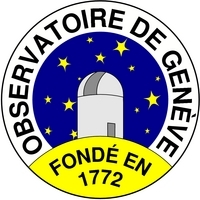
| INTEGRALPlanckGaiaPOLARCHEOPSEuclidATHENA |
| HEAVENSFACTCTALOFTSPICAJEM-EUSOXIPEeXTPTheseus |
| XRISMMAGBOUNDSMARTNet |
| ISDCCDCI |
| Data Centre for Astrophysics Astronomy Department of the University of Geneva |
| ISDC Seminar |
Jean Ballet
CEA Saclay, AIM/Service d'Astrophysique, France
Particle acceleration in supernova remnants
Abstract. The cosmic-rays that pervade the Galaxy (including the Earth's environment) are thought to be accelerated in strong shocks via a diffusive mechanism (1st order Fermi) originally proposed in 1978. The best place to study that phenomenon is the blast wave created in the interstellar medium by supernova explosions. Theory has it that in young supernova remnants (where the shock velocity is several thousand km/s) the mechanism is so efficient that it transfers a sizable fraction of the kinetic energy to the accelerated particles rather than the thermal gas. This in turn modifies the shock itself, increasing the compression ratio above 4.
I will present the observational constraints on that mechanism accumulated in X-rays since the launch of the Chandra and XMM-Newton telescopes, illustrated on Cas A, Tycho, SN 1006. The most spectacular of those is the morphology of the X-ray synchrotron emission in the young supernova remnants, concentrated in a very thin shell at the blast wave. The most likely interpretation is that the accelerated particles cool down (due to the synchrotron emission itself) very fast behind the shock. This leads to the idea that the magnetic field was amplified at the shock (by the acceleration process itself) up to several hundred micro-Gauss. A second characteristic directly related to the acceleration mechanism is the width of the shell filled by the shocked ambient medium (limited inwards by the supernova ejecta).
Finally, I will discuss the gamma-ray emission of supernova remnants, in the light of the recent TeV results by HESS and Fermi. The GeV range is the best to look for hadronic emission (nuclear interactions between cosmic-ray protons and the interstellar gas, followed by π0 decay) in middle-aged remnants, whereas the TeV range is more sensitive to the leptonic emission (Inverse Compton on CMB, infra-red and optical photons).
>> Notice
>> List of ISDC seminars







